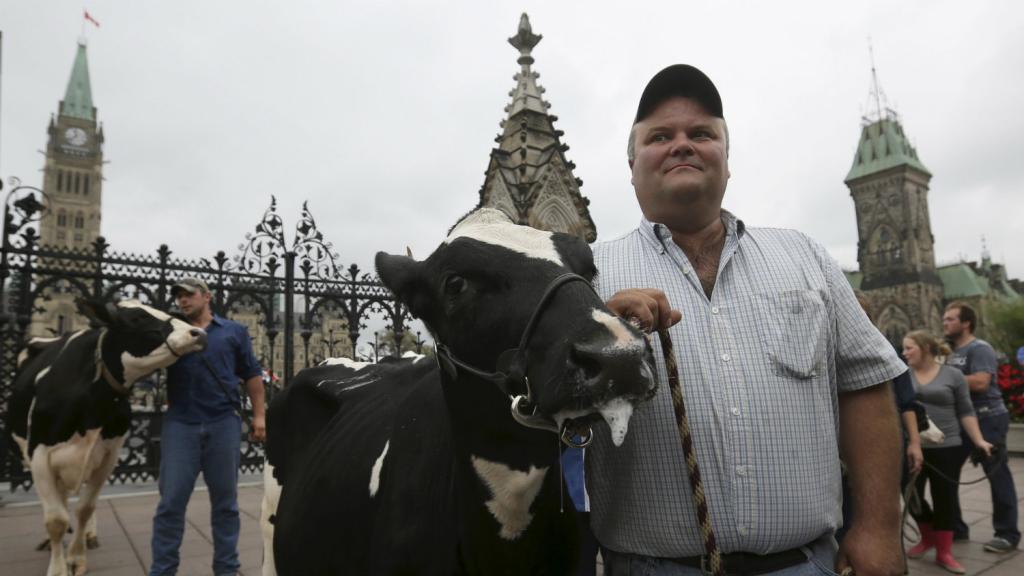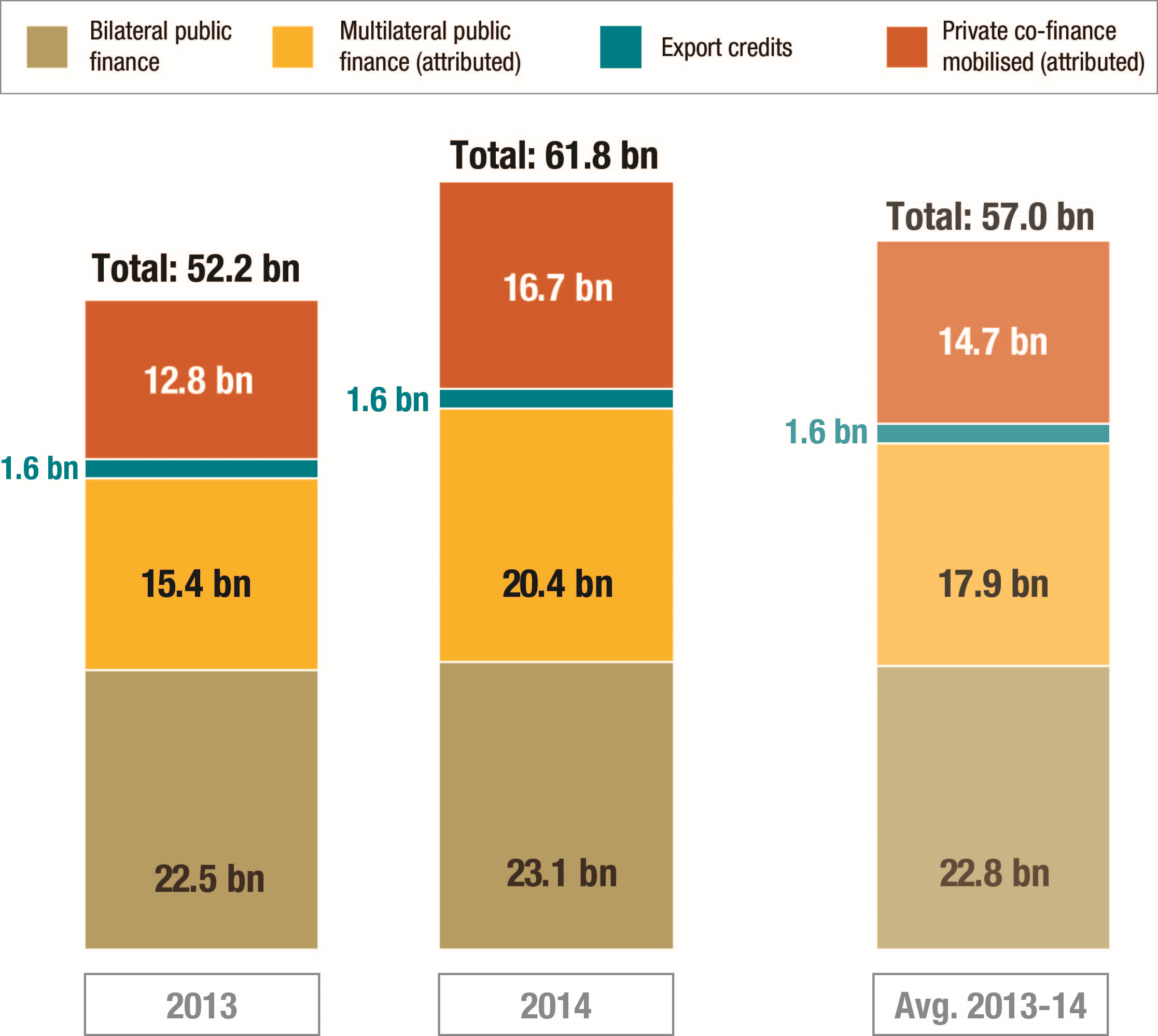In Copenhagen in 2009, diplomats from industrialized countries agreed to stitch together $100 billion annually by 2020 in funding to fight climate change in developing countries. With five years to go, an obvious question is how close we are to meeting that goal. A new report by the Climate Policy Initiative (CPI) and the Organization for Economic Cooperation and Development (OECD) gives the world a solid C: In 2014, public and private sources committed $62 billion to climate finance.
Not bad. Not $100 billion, but not bad.
Between 2013 and 2014, the years on which the report focuses, public finance made up more than 70 percent of the total cash flows, and money from private sources composed about 25 percent. The remaining handful of percentage points — about $1.6 billion worth — came in the form of financing and insurance for exporters of renewable energy.
The majority of the funding (over three-quarters) went toward reducing greenhouse gas emissions, about a sixth went to adapting to climate change, and the small remainder went to initiatives targeting both types of projects. Figuring out the appropriate balance between mitigation and adaptation funding is an omnipresent object of debate in climate diplomacy. The more we can prevent climate change, the less we have to adapt to it — so the logic goes — but for many developing countries already feeling the effects of a changing climate, adaptation money can feel infinitely more urgent.
“Our hope is that this report will contribute to transparency and confidence-building ahead of the U.N. climate summit in Paris in December,” said CPI Senior Director Barbara Buchner at a climate finance event in Lima. Buchner reiterated the importance of transparently monitoring and reporting climate cash flows. If countries don’t know how much money is on the table, it’s particularly difficult to assess one another’s credibility and negotiating positions.
Casting the report in a similar light, Secretary of State John Kerry said, “This significant progress toward the $100 billion goal will help build confidence that climate finance is flowing and continues to increase.”
But money is also worth more than confidence-building — it does, of course, go to financing actual projects. And every penny helps, especially when we’ve got to dig up another 3.8 trillion of them if we want to hit that $100 billion goal.




